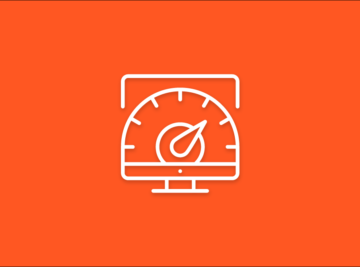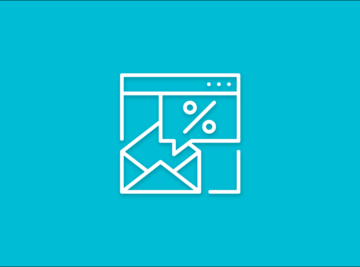So you’ve decided to work with an inbound marketing agency. That’s great! Inbound marketing is a fantastic way to build a marketing funnel that will help your customers find you through organic search, allowing you to capture more leads, close more deals, and boost your bottom line.
As a marketing strategy, it’s the one that we most firmly believe in and recommend to our clients.
While inbound marketing is great, we would be lying if we said that it doesn’t take a lot of work to get up and running. But just because something is hard is no excuse not to do it.
To help assuage any fears or concerns that you might be thinking about as you get ready to start putting your inbound marketing plan into action, we’ve pulled together this list of questions that we’re commonly asked at the beginning of our engagements.
Take the Guesswork out of Inbound
Receive a detailed Inbound Marketing Strategy in 30 days or less.
1. What will the next few months look like?
Our engagements typically break down into four primary phases. Though the exact timeline of each phase will depend on the individual client and your needs, the outline below offers a solid representation of what the first year of working with Pepperland typically looks like.
Phase 1: Strategy Development
Strategy development is by far the most important phase of our entire process for one reason: It lays the groundwork for everything that lies ahead. This is the phase where we develop an intimate understanding of your business, your customers, and your goals, and ultimately it is this understanding that will guide our actions moving forward.
Phase 1 kicks off with the creation of the Inbound Marketing Gameplan, which outlines a 12-month quarterly strategy. This document is rich with information, but some of the most important pieces include:
- Developing buyer personas so that we know who it is that we are targeting with our content.
- Identifying the questions that your personas ask and using those questions to conduct keyword research.
- Conducting a technical audit of your website including things like page speed, redirects, http vs. https, and more, to ensure that both users and search engines can effectively navigate your content.
- Putting a measurement model in place with KPIs, measurement, dashboards, and other tracking solutions so that we can measure the effectiveness of the campaign and make adjustments on the go.
Phase 2: Building the Funnel
Once Phase 1 is complete, we can begin building the funnel and putting all of the key pieces in place. The exact order of how we implement the funnel will be dependent on a number of factors, and is tailored to each of our individual clients (See #6 below). That being said, the process will typically include:
- Creating content, or coaching clients through content creation, in order to attract visitors to your website through organic search. This may include any mix of blog posts, ebooks, checklists, webinars, and other kinds of content offers dependent on your business and the assets that your customers would value.
- Creating Calls-to-Action (CTAs) and placing them strategically within your website so that your visitors have the opportunity to convert into leads.
- Creating Landing Pages that offer content offers in exchange for contact information
- Building out lead nurturing programs in the form of email drip campaigns and workflows, moving your leads deeper into the funnel until they become sales-ready or paying customers.
Phase 3: Ongoing Lead Generation Campaigns
After the funnel has been effectively built and can handle an increased flow of new visitors and leads, we will shift into ongoing traffic growth and lead generation. This will entail continuously attracting qualified visitors to your site by implementing an effective content strategy tailored to the Awareness stage of the Buyer’s journey, typically focused into quarterly campaigns.
These campaigns involve work that falls into three main buckets:
- Content Development: Creating the content that will act as a magnet to draw visitors into your funnel.
- Technical SEO: Regularly critiquing content for ranking factors and making adjustments as necessary (for example, by working on meta descriptions, title tags, quality, and more).
- Outreach/Promotion: Getting your content out in front of an audience through social media, link building, and search/display ads.
Phase 4: Optimization and Refinement
At the end of each quarter, we will return to the GamePlan to evaluate how the quarter went, what goals have been achieved, and what work still needs to be done. It is very common, especially in the early stages of a campaign, that refinement will be necessary, as early work may uncover additional issues or details that must be resolved in order for a campaign to be effective. This is completely normal, and a part of the process of getting your website up to par.
2. Am I really up to leading this project?
One of the common hesitations we hear at the start of our engagements with clients is: Am I really up to leading this project? Maybe you’re worried that you’re skill-set is too limited to manage all of the moving pieces. Maybe you’re already wearing a bunch of different hats and you’re concerned about your ability to hold an agency accountable. Whatever your concern, we are here to ensure that your campaign is a success.
Our dedicated team of strategists and content creators are skilled at keeping projects pushing forward, holding both our internal team and your team accountable for tasks. Additionally, coaching, training, and advising along the way ensure that you will build the skills necessary to get the absolute most value out of our engagement. (See #5 below to learn more about how we foster growth in our clients.)
In addition to the above, the meeting notes and analytics dashboards that we provide will help you prove the impact of your efforts to your broader team. This allows you to maintain support and gain buy-in for the initiative among both your superiors and peers.

3. How am I going to manage this project?
It’s easy to feel a little overwhelmed when you look at the scope of an inbound marketing campaign, especially if it’s your first time at the rodeo. But we can’t stress enough the fact that you can do it.
As long as you have a commitment to see the project through, we will ensure that you know everything you need to know in order to keep moving forward. An ability to give us timely responses/feedback and to connect us to the right people (subject matter experts, your customers, key stakeholders, etc.) we can do much of the heavy lifting. You do not need a dedicated project manager for your campaign to be successful.
As far as managing weekly and monthly tasks, we use the project management Teamwork, which offers Task Boards that allows you to keep your eye on what is coming due and what’s falling behind. That, paired with weekly calls that result in a clearly-defined list of action items for both your team and our own, ensures that the campaign will progress smoothly from start to finish.
4. How am I going to find the time to create all of this blog content?
Creating high-quality content is one of the single most important parts of any effective inbound marketing campaign. But it is also often the #1 bottleneck in any campaign. Simply put, people often underestimate the time and focus that it takes to churn out high-quality content consistently, and this can cause a campaign to fail or under-perform expectations.
We help our clients navigate this issue in a number of ways.
Our internal content creators have extensive experience in content creation, inbound marketing, and publishing, and that means that we know how to create content that performs well, and that gets shared, ranks, and actually generates leads for your business. Whether we are creating content for you, or we are guiding you in creating it yourself, this expertise will help ensure the success of your inbound marketing campaign, from planning an editorial calendar to optimizing your content for SEO and everything in between.

In the event that you would like to keep content creation in house and handle it on your own, we will provide research-backed outlines that identify exactly how an article should be structured, including headlines, image suggestions, and other factors that will help it to rank well in search.
There are also often situations where you may decide to create content on your own, but then begin to fall behind midway through the project as other challenges arise and priorities shift. In this event, we are available to jump in and adjust our level of support to help you if you feel that you’re falling short. We love working with internal teams as they are the subject-matter experts and can bring a more authentic, authoritative voice to the content, but we’re also very skilled at extracting that information through interviews and doing the writing on your behalf.
5. How am I going to learn the skills that I need to pull this off successfully?
As a regular part of our engagements with clients, we do our best to teach you how to do everything that we do so that you can begin to develop your own skills and see more value out of your inbound marketing initiative over time.
This doesn’t mean that we’re trying to chase ourselves out the door—we hope to work with you for years to come!—but as you develop your own skills, we can offer more sophisticated, deeper support, allowing us to become more and more effective over time.
Additionally, HubSpot Academy offers a gold mine of free training and certifications that will help you at learn all about what we do and how we do it, from the basics of inbound marketing, email marketing, content marketing, growth-driven design, and more. We highly recommend all of our clients, and anyone embarking on an inbound marketing journey, to check it out.

6. What part of the funnel should I start building first?
Every situation is different, and it’s difficult to say in a blog post, definitively, where you should start. The answer to that question varies greatly from company to company, and depends on a slew of factors including your business goals and challenges, how your customers operate, and what your competitors are doing.
That being said, we’re very accustomed to finding the best opportunity for our clients to move forward, and we will guides you towards fulfilling the items that will have the greatest impact first.

Often, we want to start as close to the bottom of the funnel as possible, as those are the prospects who are closest to becoming your paying customers. Once the bottom of the funnel is strong and aligned with your buyer’s journey, we will begin working backwards higher and higher until we reach the wide mouth at the top of the funnel. After all, it doesn’t make much sense to start at the top if there’s no path forward.
If the bottom of your funnel is already very strong, that’s great! That means we can dive right into strengthening/building out the top of the funnel: Creating new content to attract visitors, new subscribers, and leads with content and move them forward through the funnel.
Alternatively, if your sales process is broken, we will often recommend starting by focusing our efforts there, first. There’s no sense in driving a bunch of traffic and leads into your funnel if your sales team isn’t prepared to handle it.
But again, it’s important to remember that all of this is highly dependent on the unique needs of our clients. At the start of our engagement, we will work with you to identify where it makes the most sense to start, and create a clear action plan that everyone agrees with.
Taking the First Steps
This is how we here at Pepperland typically build out a marketing campaign. Many other agencies will follow a similar approach, but it’s important to remember that each agency is unique and will do things their own unique way.
If you have any doubts, concerns, or confusion at any time along the process, just be sure to ask your strategist, account manager, or other primary point of contact that will be handling your campaign. It’s always better to ask at the beginning of a campaign than to wait and assume that your concerns will be addressed.










